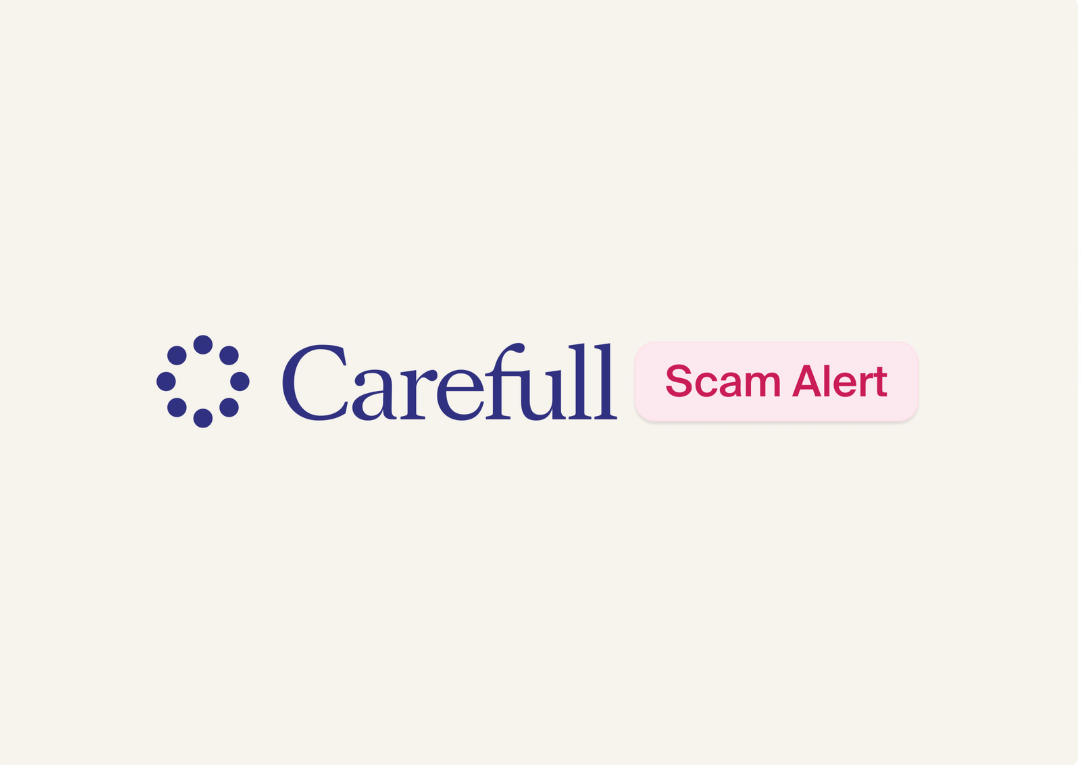How to Spot Government Imposter Scams

Consumers are increasingly losing money to scammers posing as representatives of government agencies. Losses to these government imposter scams jumped to $789 million in 2024 from $618 million in 2023, according to the latest figures released by the Federal Trade Commission.
A call that supposedly is from a government agency can incite panic and an accompanying lack of judgment. Being told that you owe back taxes or are in danger of losing your benefits may cause even the most logical person to respond out of pure fear.
And that’s exactly what the scammers want: to terrify you enough to give up crucial information or money. However, you can reduce the risk of becoming a victim by knowing the stories and strategies government imposter scammers use.
Common government imposter scams
Tactics and topics vary, but all scammers want the same thing: to get paid. Sometimes that’s cash upfront, such as a wire transfer. Other times they’re fishing for the information they need to empty your bank account or commit identity theft.
But it’s all about the money. Here are some common government imposter scams:
Medicare scams
Scammers kick into high gear during Medicare open enrollment from October 15 through December 7, hoping to steal personal information. An impersonator might ask for your Medicare number, Social Security number, or even for credit card and bank information. The goal, of course, is to steal from you or commit identity theft.
Ignore any call or text from “Medicare” because Medicare doesn’t contact people out of the blue to offer help with open enrollment or provide any other service. Even if the caller ID says “Medicare,” it’s a scam.
Other thieves offer to send so-called durable medical equipment, such as crutches or splints, and bill Medicare for their costs. To do so, of course, they just need your Medicare or Social Security number. Some of these fraudsters actually do send inferior-quality items, while billing Medicare for higher-end stuff. Some, however, never send a thing—they just file phony Medicare claims.
Social Security scams
Because so many older adults rely on Social Security benefits to get by, you can imagine how easy it would be to intimidate them. A common government imposter scam is a phone call saying that your Social Security number was temporarily suspended.
The caller then asks you to confirm the number so it can be reactivated or offers to give a new number for a fee. However, the Social Security Administration never blocks or suspends numbers.
Some scammers threaten to seize your bank account or to help you move the money where it will be safe. Others say that your benefits will increase once you pay an administrative fee or confirm your Social Security number, name and date of birth. However, they can use this information for identity theft and even change your direct deposit information so that they, not you, will get the benefits.
At times, the scammers use texts, e-mails and sometimes even mail to find new victims. No matter which communication form they choose, know this: The SSA almost never contacts citizens out of the blue, and a legitimate agent won’t ask you to verify your Social Security number. A real government employee also won’t threaten you with loss of benefits or ask for any form of payment.
IRS scams
Thieves often tell potential victims that they owe back taxes and threaten fines or jail time unless the (fake) debt is paid through a wire transfer, gift card or prepaid debit card purchase. Or they’ll say that your account needs verification and ask you to visit a website to do so. The scammer then uses the personally identifying information to steal from you.
The IRS almost never initiates contact via e-mail, text or phone. Instead, contact begins with a letter through the U.S. Postal Service. If someone gets in touch with you in any other way, it’s a scam.
Signs of a government imposter scam
Scammers use a variety of stories to con people out of their money or personal information. However, all of the scams tend to have telltale signs:
- Incorrect spelling or grammar in a text or e-mail
- An unsolicited call with a request to “confirm” a Medicare or Social Security number
- Payment requested in an unusual form of payment such as a wire transfers, gift cards or cryptocurrency
- Extra payment requested for entitlements such as Medicare or Social Security
- Demands for bank account or credit card information, or Social Security, Medicare or driver’s license numbers
- Threats of arrest or legal action
Beware of calls, emails, text messages and letters with any of these red flags.
How to avoid government imposter scams
Never answer calls from unknown numbers. Let calls go to voicemail because most crooks won’t leave a message. They want to connect with their victims in real time.
Note: Some scammers use technology to make it appear the call is coming from a government agency. Even so, don’t answer. If the call is legitimate, the government representative will leave a message. However, don’t call back the number that is provided in the off chance that a scammer has left a message. Look up the number of the government agency that supposedly is calling and call that number.
Never click on an attachment or link in an e-mail or text. The attachment could download a virus or malware on your device. And links could take you to fake websites that might request your personal or account information.
Don’t fall for intimidation tactics. The U.S. government doesn’t allow employees to bully citizens. Some fraudsters have gone so far as to threaten deportation if the victims didn’t pay. If someone really does owe taxes or need a new Social Security card, the government will reach out in a much less aggressive manner—and it would never ask for wire transfers or cryptocurrency payments.
What to do if you’re a victim of a government imposter scam?
The first thing you need to do is reduce the financial damage. It’s also vital to prevent identity theft and medical identity theft in the future by taking these steps.
Attempt to get your money back
Depending on the payment method you used, you might be able to get the money paid a scammer if you act quickly. The Federal Trade Commission suggests these tactics:
Cash payments. If money was sent through the mail, get in touch with the U.S. Postal Inspection Service and request an intercept of the envelope or package. If a private delivery service was used, contact the company to ask the same.
Credit or debit card payments. Contact the bank, credit union or card issuer to ask that the transaction be reversed.
Unauthorized bank transfer. If the scammer accessed a bank account, tell the bank that this wasn’t authorized and that you need that money back.
Money transfer app. Contact the company and ask for a reversal of payment; if the app is linked to a debit or credit card, report the fraud to the bank or credit card company and ask for the money back. See Can You Get Your Money Back From Payment App Scams?
Wire transfer. Contact Western Union, MoneyGram or whatever company was used, inform them the transaction was fraudulent, and request that funds be returned. If the transfer was done through a bank, ask that the wire be reversed.
Gift card payments. Get in touch with the gift card issuer and state that it was part of a scam. Ask for a refund. (Be prepared to send screenshots of the card and the receipt.)
Cryptocurrency. These transactions generally aren’t reversible. But it’s worth asking the company used to send the payment if you can get the funds back on the grounds that the transaction was fraudulent.
Again, these tactics might not work. That shouldn’t keep you from trying.
Protect personally identifying information
If you revealed your Social Security number, immediately visit IdentityTheft.gov for step-by-step information on what to do next.
If a username and password were given out, immediately create a new strong password with a combination of upper- and lowercase letters, numbers and symbols. If the stolen password was used for more than one account, create new sign-ins on those accounts as well. Also, sign up for multi-factor authentication to make it even harder for hackers to access your accounts.
Protect debit and credit card information
Contact the bank or card issuer to close the account and file a fraud report. Consider a credit freeze so that no one can open new credit lines in your name. Also, consider signing up for account, credit and identity monitoring through a service such as Carefull. Carefull will monitor your bank, credit card and investment accounts, credit reports and personal information and alert you if it spots anything unusual. Plus, it includes up to $1 million in identity theft insurance.
Stop remote access
Some scammers use malware to steal information. It’s essential to update a device’s security software and run a malware scan. If you granted someone remote access to your computer, disconnect from the Internet and follow these steps. If the thief has taken control of a mobile phone account, contact the service provider immediately.
Reporting government imposter scams
Don’t be embarrassed to report that you’ve been scammed. It can happen to anyone, but no one deserves to be defrauded.
Report the incident to the Federal Trade Commission at ReportFraud.ftc.gov. It’s also a good idea to report it to local law enforcement and to get a copy of the incident report, which you might need to repair the damage if your identity is stolen.
[ Keep Reading: How Your Risk of Financial Exploitation Increases as You Age ]

3 Steps to Safer Money,
Try it Free for 30 Days
Step 1
Start your free,
no-risk trial
Step 2
Connect the accounts and cards you want protected
Step 3
Stay alerted to any
unusual activity



.png)



